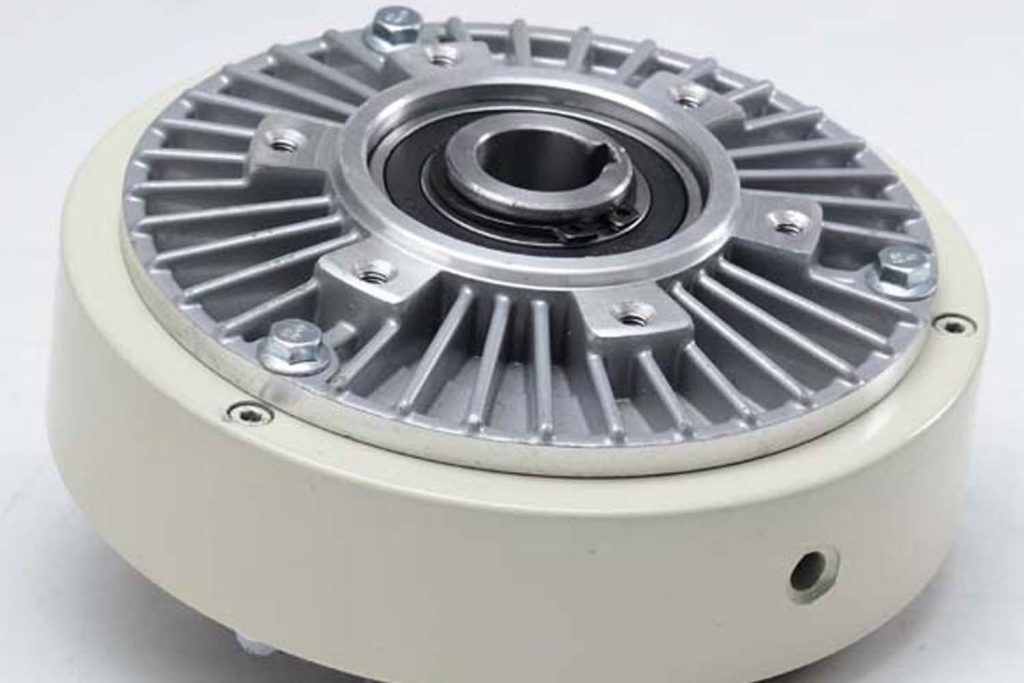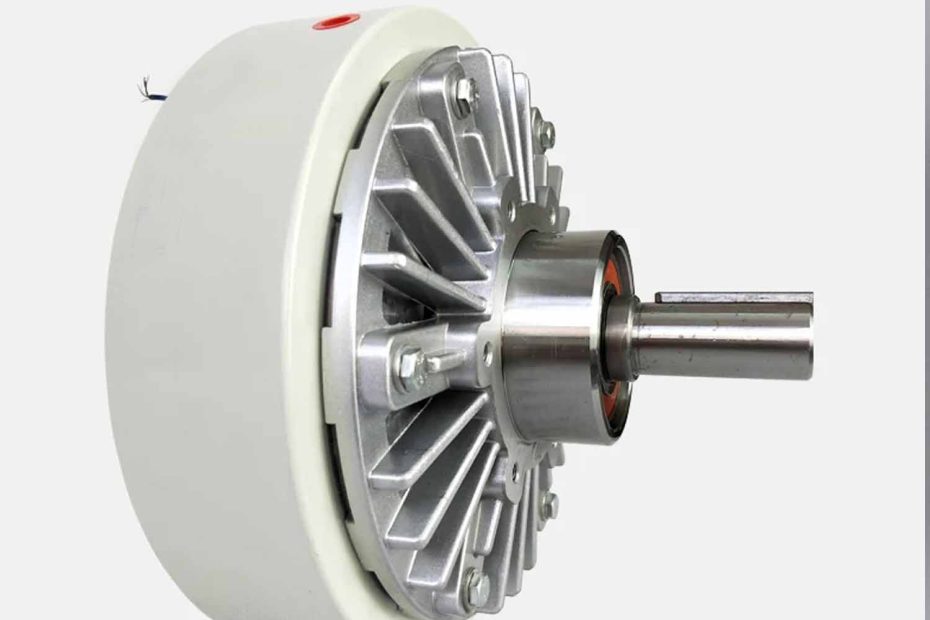Magnetic Particle clutch, also known as electromagnetic Particle clutch, is based on electromagnetic principle and uses magnetic Particle to transmit torque. There is a basically linear relationship between the excitation current and the transmitted torque. It can transmit a certain torque regardless of the slip, and has the advantages of fast response speed, simple structure, no pollution, no noise, no impact vibration, and energy saving.
When the excitation current of the hollow shaft magnetic Particle clutch remains unchanged, it can stably transmit a constant torque. The torque it transmits is not affected by the differential slip speed between the transmission part and the driven part, that is, there is no difference between the static torque and the dynamic torque. If the characteristics are applied to tension control, the user only needs to adjust the size of the excitation current to accurately control and transmit the required torque, thereby achieving the purpose of controlling the tension of the coil simply and effectively.
Working Principle Of Hollow Shaft Magnetic Particle Clutch
- Coil static magnetic particle clutch and magnetic particle brake are automatic devices that control the input current to change the output torque.
- When the coil is not energized, the input shaft rotates, and the magnetic particle is pressed against the inner wall of the clamp ring under the action of centrifugal force. The output shaft and the input shaft have no contact. At this time, it is in an idling state.
- When the coil is energized, the magnetic particle generates magnetic flux under the action of magnetic lines of force, so that the output shaft and the input shaft become a rigid body and rotate, and slip occurs when overloaded. At this time, it is in a working state. Thus, the purpose of transmitting torque is achieved.

The hollow shaft magnetic particle clutch is usually used in conjunction with a tension detector. The torque of the hollow shaft magnetic particle clutch is automatically controlled by the tension controller to keep the tension constant. Generally, when the hollow shaft magnetic particle clutch works in a slip state, the tension is controlled by the torque of the hollow shaft magnetic particle clutch to keep the tension constant.
When the excitation current remains unchanged, the torque will be transmitted stably and will not be affected by the change in speed. This feature is used in tension control. Only the excitation current needs to be adjusted to accurately control the torque, thereby achieving the purpose of controlling tension.
Conclusion
The hollow shaft magnetic particle clutch transmits torque through magnetic particle under electromagnetic effect and is a multi-purpose automatic control component with excellent performance.
